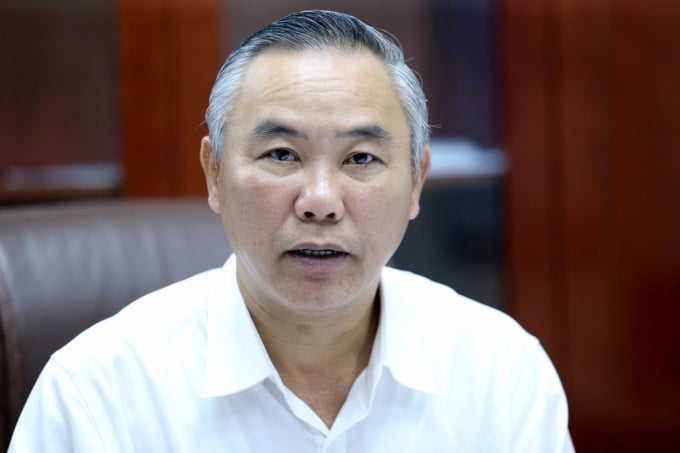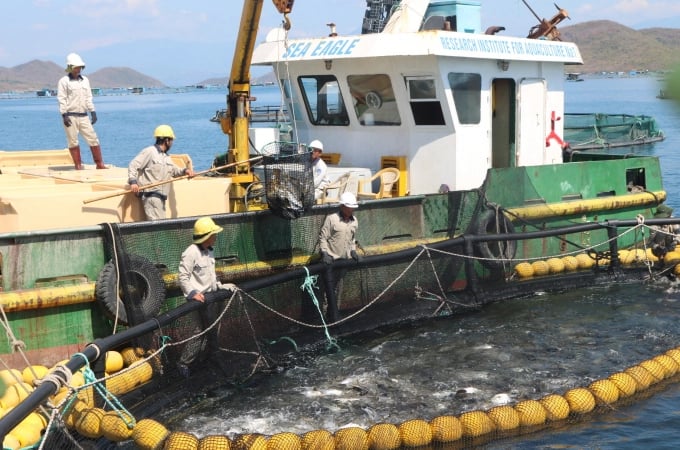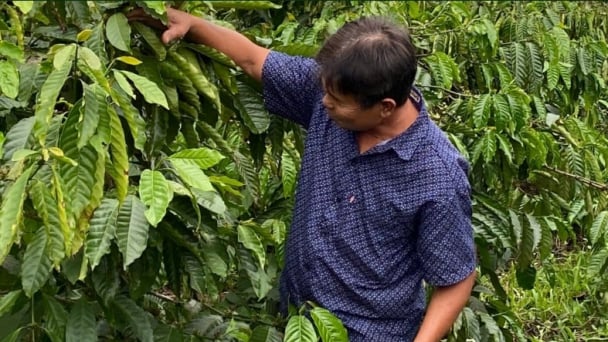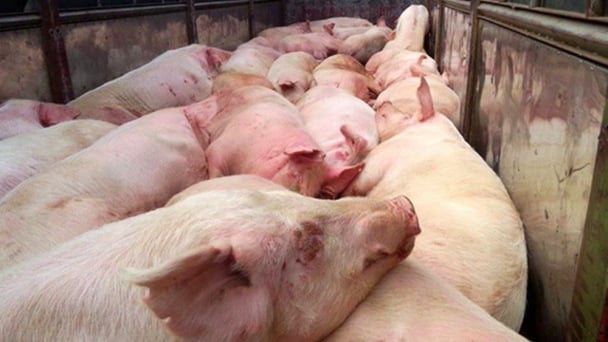June 18, 2025 | 16:30 GMT +7
June 18, 2025 | 16:30 GMT +7
Hotline: 0913.378.918
June 18, 2025 | 16:30 GMT +7
Hotline: 0913.378.918

Phung Duc Tien, Deputy Minister of Agriculture and Rural Development. Photo: Minh Phuc.
Could you tell us the potential for developing the aquatic resources of Vietnam today?
Vietnam’s total fisheries output has experienced high growth for many years. For example, we strive to reach 8.5 million tons of aquatic products this year. Of this amount, 3.9 tonnes are wild-caught and 4.6 tonnes are farm-raised. Up to now, we can confirm that the above targets have been met.
In terms of exports, despite being affected by the COVID-19 pandemic, climate change, sea-level rise, and floods, seafood export value has not decreased compared to 2019’s figure. This is attributed to the growth of inland aquaculture and fishing.
However, we will focus on marine aquaculture in the coming years. This is a very important area but we have not yet completed the legal framework to facilitate businesses.
If marine farming is promoted, we will reach an output of 2 million tonnes by 2030, thus reducing the exploitation volume to enhance conservation efforts and that is the sustainable development goal of the Vietnamese fisheries sector.
In line with Resolution No 36 of the Party Central Committee, the area of seawater surface used for conversation work will be expanded by 6 percent by 2030. What are the challenges in realizing the target?
Under the approved plan, the country aims to have 16 marine protected areas, but until now only 12 zones have been set up. Thus, drastic solutions are needed to meet the set target.
Besides, the establishment of protected areas is only an administrative issue, whether it is effective or not should be considered.
However, there is no way to develop aquatic resources rather than to conserve them. First of all, we must have the right attitude toward marine conservation. Otherwise, the country will suffer huge consequences.
We can take the marine area affected by discharging untreated wastewater of Formosa Steel Plant in the central province of Ha Tinh as an example. The number of species and fisheries output has been increased substantially after the marine ecosystem has been restored.
For protected areas that do well on conservation like Cu Lao Cham in the central province of Quang Nam, it has not only achieved ecological value but also biodiversity and tourism ones. Thus, conservation is very important.
There are still differences among localities regarding economic development management, especially tourism development which causes many problems for marine ecosystems and reduces aquatic resources. So what should be done to make the operation of marine protected areas more effective in the future?
With a coastline of over 3,260 kilometers and an area of one million square kilometers, Vietnam can obtain the sustainable development goals if the country does well in the conservation of fisheries as outlined in Resolution No 36 - setting aside 6 percent of the sea surface to preserve aquatic resources
However, up to now, the protected area has only covered 1.7 percent of the country's natural sea area.
Solutions to achieve these goals will be included in the development strategy for the fisheries sector.
It should be noted that if we don’t complete the planning for marine protected areas (MPA) and overcome the weaknesses including those related to budget and implementation as well as improve the institution, it will be hard to have good MPAs.
Lessons from developed countries showed that if we do not do good conservation since the beginning of industrialization and urbanization, we will face difficulties and have to spend a lot of money if it is done later.
Currently, we are changing the structure of fishing exploitation. This is one of the factors to protect aquatic resources. In the future, what policies will the State offer to support fishermen to shift to other jobs?
With a fleet of 96,609 ships, of which 31,000 are the ones with a length of 15 meters or more, it will be difficult for aquatic resources to recover if we continue to exploit at this rate.
We need to have a quota in any industry. Quotas, as well as the number of the fishing fleet, will be restricted in the Development Strategy for the Fisheries sector by 2030, with a vision to 2045.
Under the strategy, there are 9 projects including one focus on occupation shifts for fishermen, ensuring their livelihoods while limiting overexploitation and maintaining growth.
For instance, we could change from catching to aquaculture and reduce the fleets. The number of offshore fishing fleets should be strengthened and nearshore ships will be decreased. By doing so, we can protect the marine ecosystem and the number of species at the same time.

Vietnam’s marine aquaculture has not yet been exploited due to the incomplete legal framework which is attractive to investors. Photo: VAN.
How many quantities of marine caught products to be reduced according to the fisheries development strategy? Do we have any policies to offset the reduction while maintaining fisheries output?
We will reduce capture fisheries from 3.9 million tonnes to 2.8 million tons per year, and increase marine aquaculture. However, there are still obstacles relating to the allocation of water surface under Government Decree 51.
According to Marine Law, the allocation and granting of a red book for surface water are similar to those for land.
It is necessary to invest in infrastructure to facilitate businesses doing farming at the sea.
Marine farming does not only reduce environmental pollution, easy for tracing the origin as well as generating larger scale and output.
In the coming time, we will coordinate with the Ministry of Natural Resources and Environment to remove obstacles in Decree 51 related to the management of sea and sea surface allocation.
Author: Minh Phuc. Translated by Thanh Lam.
![Turning wind and rain into action: [9] Digitizing hydrometeorological data in response to climate change](https://t.ex-cdn.com/nongnghiepmoitruong.vn/608w/files/news/2025/06/17/z6704423696987_15fd32ffc26d590d204d520c9dac6786-nongnghiep-165943.jpg)
(VAN) Farmers have begun accessing hydrometeorological applications to adjust their cropping schedules, aiming to ensure productivity and adapt to climate change.

(VAN) After 5 years of implementation, the CAI initiative has helped coffee growers change their farming practices, moving toward responsible agriculture that meets global export standards.

(VAN) The primary prerequisite for the comprehensive and robust integration of Vietnam's livestock sector into the global value chain is the establishment of a disease control system.
![Turning wind and rain into action: [8] Real-time salinity detection and early warning technology](https://t.ex-cdn.com/nongnghiepmoitruong.vn/608w/files/news/2025/06/17/z6704423696987_15fd32ffc26d590d204d520c9dac6786-nongnghiep-151127.jpg)
(VAN) Thanks to the integration of modern hydrological-hydraulic models, remote sensing technologies, and artificial intelligence, the accuracy of hydrological forecasting has significantly improved.
/2025/06/17/2344-1-131758_261.jpg)
(VAN) Amid tariff risks and growing trade barriers in the U.S. market, Australia is emerging as a promising destination to sustain the growth momentum of Vietnam's shrimp exports.
/2025/06/17/3942-2-143243_548.jpg)
(VAN) Recently, in Sweden, the Secretary of the Binh Dinh Provincial Party Committee presented the Investment Registration Certificate for the 'Polyester Fabric Recycling Complex' project to SYRE Impact-AB Company.

(VAN) The results of national programs are essential for establishing a contemporary livestock sector that is well-equipped to meet the demands of both domestic and international markets, with robust biosafety standards.